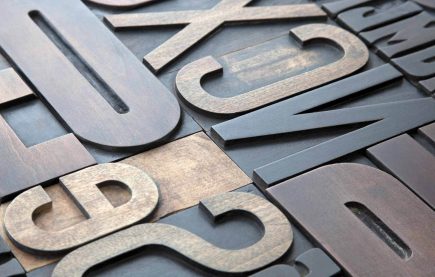
Why We Follow Web Design Conventions, Not Trends
Web Design Trends Vs. Web Design Conventions
First, we wanted to point out that there is a grave difference between web design trends and website conventions. Web design trends and fads, are elements that change over time and are influenced by several different factors. Some are fantastic and long-lasting, while others are terrible and should be tossed out.
On the other hand, web design conventions are standards. They do not change and should never be altered because they are universally understood. While we are a web design agency that advocates differentiation in order to stand out from your competition, web design conventions are the one area where we don’t deviate.
Examples of Tried & True Web Design Conventions
-
Navigation Item Titles: For instance, if you were a developer it might be fun to label your About section “Brick by Brick” or your Testimonial section “Truth Be Told” in your navigation. This language isn’t the pre-established convention that most users on the internet are familiar with. They are more familiar with the simplest of terms “About” and “Testimonials.” A primary goal of any website is to allow users to easily find an item. Using conventions assists this effort greatly. Clear, simple language in this case is unmistakable and appreciated to new users on your site. Clever wording is best used as headlines.
-
Home: It’s widely accepted that clicking a company logo in the header will bring you back to the homepage. Therefore, it’s unnecessary to create a “Home” button in your navigation.
-
Contact Info: Another web design convention that positively impacts user experience is the location of your contact information. People typically look for a phone number at the top of a page, while they expect to find the rest of the company’s contact info on the bottom of every page as well as the dedicated contact page.
Why You Shouldn’t Blindly Follow Trends
As we’ve established, conventions are great! They support a positive user experience. Web design trends can transform your website, but if you select the wrong ones, they could conversely drag it down. That’s why, web design trends should be evaluated by an experienced web designer to determine their validity and shelf life before they are implemented.
Imagine basing your website around a certain fad that ends up fizzling out faster than it came onto the scene. Once it fades, you are left with a dated site and a huge bill. Figuring out how to best design your website for your target audience is definitely best left to the professionals.
Where Web Design is Headed in 2019
Lform-Approved “Trends”
Over the last two years, we’ve noticed some broad sweeping web design trends that we feel are relevant, look great, and therefore will be sticking around for a bit. Because they are so general, we like to consider them more of web design movements rather than trends. These movements include brutalist web design, Swiss style typography, and minimalist copy with in-your-face imagery that tells a brand’s story for it.
These movements will be—well—trendy, for a few more years to come and help further influence the web design movements that follow. Based on our experience, good trends tend to be en vogue in about five-year cycles. However, it’s important to mention that these trends to play off of each other and evolve over time. It’s not like fashion where one day something is in and then the next day it’s out. With these trends, we feel confident recommending them to our clients for this very reason.
So, we encourage your to be bold with your web design choices—as long as they have been researched and vetted to be effective—and to remember to use conventions. Coupling conventions with bold design is a recipe for an awesome user experience and successful website.



